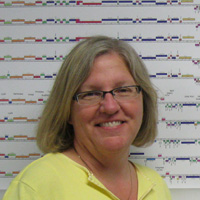Welcome to the forums at seaphages.org. Please feel free to ask any questions related to the SEA-PHAGES program. Any logged-in user may post new topics and reply to existing topics. If you'd like to see a new forum created, please contact us using our form or email us at info@seaphages.org.
Recent Activity
All posts created by debbie
| Link to this post | posted 05 Sep, 2020 13:16 | |
|---|---|
|
|
An update to DNA Master has been posted. Blast will not work unless you update. The latest version is Version 5.23.3 Build 2657 4Sep2020 |
Posted in: DNA Master → Blast error
| Link to this post | posted 04 Sep, 2020 19:46 | |
|---|---|
|
|
Kyle, It is up to GenBank. They promise an accession number in 3 days when a genome is submitted. Then they have to process it. That time is unpredictable. My last submissions took ~ month. debbie |
Posted in: Annotation → In Genbank
| Link to this post | posted 04 Sep, 2020 14:15 | |
|---|---|
|
|
No worries. Par for the course. |
Posted in: DNA Master → Blast error
| Link to this post | posted 04 Sep, 2020 13:28 | |
|---|---|
|
|
Hi all, Sorry about the timing. In talking with Dr. Lawrence, we think this is an NCBI change. I have written emails to any/all folks I can think of at NCBI who may be able to answer or direct me to who could answer the question. NLM Help Desk replied with a 2-5 response timeline. I'll keep you posted. debbie |
Posted in: DNA Master → Blast error
| Link to this post | posted 03 Sep, 2020 16:51 | |
|---|---|
|
|
Steve, I just got the same error. I'll look into it from my end. debbie |
Posted in: DNA Master → Blast error
| Link to this post | posted 03 Sep, 2020 16:35 | |
|---|---|
|
|
Hi Steve, You are just having a heck of time. Have you checked your DNA Master BLAST preferences? debbie |
Posted in: DNA Master → Blast error
| Link to this post | posted 27 Aug, 2020 01:07 | |
|---|---|
|
|
Hi Sean, Yes DNA Master can handle most anything from NCBI. The version we have is for prokaryotes. So I believe there are better programs for hanfle introns and exons and such. debbie |
Posted in: DNA Master → Using DNA Master beyond phages
| Link to this post | posted 23 Aug, 2020 03:17 | |
|---|---|
|
|
Juan, Mycobacterium phage Pukovnik was found in 2005 and is in GenBank and part of numerous publications, including this one. https://pubmed.ncbi.nlm.nih.gov/24112940/ It is no longer in its draft form but has been hand curated and modified. In addition, there is experimental data to support some of the gene calls. Because Pukovnik is in GenBank, PhagesDB genes reflect that record. A DNA Master auto-annotation represents the Draft version of a file that is then curated by annotators like you. PhagesDB will report the data that that should be most complete, so if it is in GenBank. However, if it is a new genome, phageDB will post the draft information. In addition, if the data is in draft form, Phages DB (and Phamerator) may not match your DNA Master auto-annotation because of the way that the data is generated. |
| Link to this post | posted 23 Aug, 2020 02:45 | |
|---|---|
|
|
Juan, Great questions. There are a number of explanations for this. In order to best answer this, I need to know a couple of things. What school are you asking from? What phage are you talking about? Have you read the Bioinformatics Guide about auto-annotation? debbie |
| Link to this post | posted 19 Aug, 2020 19:56 | |
|---|---|
|
|
Hi Steve, Did you restart your machine? I forwarded your message on to Steve C. debbie |
Posted in: Phamerator → Phamerator down?

